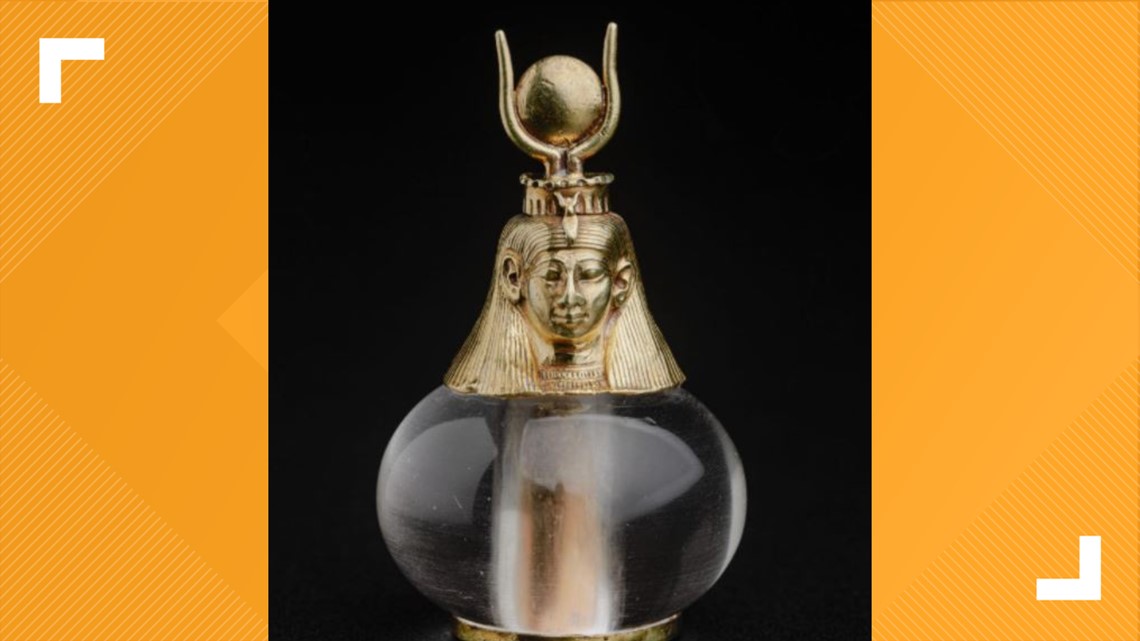The construct of race was neither heard nor thought of during the two-thousand-year span included within the Saint Louis Art Museum’s presentation of “Nubia: Treasures of Ancient Africa.”
And yet racism played a critical role in why people represented in the exhibition are just now being recognized for their thriving civilization and rich culture that should be held in equal regard to their Egyptian neighbors.
For the first several thousand of years of their history, the Nubians left no written records. All that was said about the Nubians was from the Egyptian perspective.
“And the Egyptians were sort of xenophobic,” said Denise Doxey, curator of “Nubia: Treasures of Ancient Africa.” “They presented all of their neighbors – not just the Nubians – as sort of inferior,” Doxey said. “They always talked about ‘vile Kush,’ Kush being the ancient name of Nubia.”
Doxey, who serves as Curator of Ancient Egyptian, Nubian, and Near Eastern Art at the Museum of Fine Arts (MFA), Boston, describes the relationship between Egyptians and Nubians as that of “frenemies.”
They hated and respected each other. They were rivals who took turns conquering one another and were often at war.
The Egyptians described the Nubians in derogatory terms. The early excavators who first worked in Sudan (the present day location of ancient Nubia) in the early 1900s came from a background of Egyptology – and used the Egyptian accounts to reinforce their own racist beliefs.
Among them was pioneering archeologist George Reisner. He was known for incorporating photography when he excavated in Egypt, Sudan and Palestine for the MFA in the early decades of the 20th century.
“Just because you are well educated doesn’t mean that you aren’t going to bring in your own biases and make big mistakes because you are using your own preconceived notions to influence your beliefs,” Doxey said. “Even a well-educated person like George Reisner could be totally blinded by his own racism – blind enough to misinterpret an entire culture.”
Gradually attitudes have changed, but Doxey said it has basically only been since the 1970s – when serious excavations started up again in Sudan – that people began to realize how lopsided the view of Nubia was.
The shift toward cultural equality between the two regions will be particularly easy for patrons who visit the exhibition, which is on display through August 22 at the Saint Louis Art Museum.
The attention to detail in nearly every item from every period over the 2000 years covered by “Nubia: Treasures of Ancient Africa” is stunning enough to give one pause.
An entire visual narrative is expressed through the foot of a bedpost. A tiny gold earring is crafted with such care that not even a magnifying glass could capture the full scope of its mastery.
Doxey pointed out the details of a tiny necklace pendant.
About the size of a fingertip, it displays a goddess nursing a queen. She described how the features captured in the tiny pendant illustrated that the goddess was Egyptian, but the queen was Nubian.


“I don’t know how you would do this without melting the gold while you were at it,” Doxey said while describing another pendant. “It blows me away that they could make something like this without modern soldering irons.”
There are thousands of artifacts within the “Nubia: Treasures of Ancient Africa,” that reflect nearly every aspect of life – and range in scale from miniscule to massive – to tell the story of a society hidden from so many for so long.
“In fact, these Nubian sites were very influential – very cosmopolitan with big trade networks and interaction with others in western Africa, Central Africa and along the Red Sea and the Mediterranean Sea,” Doxey said. “It was much more global than we tend to think. It seems like they were remote places, but in antiquity they were probably people from all over the region.”
Intersectionality between Egyptians and Nubians is clear and present within the exhibition, but so is their own identity as a force to be reckoned with.
Doxey pointed out the unsuccessful conquest attempt by legendary Roman emperor Augustus when he waged war against a Nubian queen. He ended up signing a peace treaty.
“I found it interesting that he took over the whole known world and couldn’t get past an African woman,” Doxey said.
She is thrilled to have the opportunity to build awareness through the exhibition.
“Some people may have a concept that it is something African, but don’t have any knowledge beyond that,” Doxey said. “I would say it’s the greatest civilization you’ve never heard of.”
That lack of familiarity presented a challenge as Doxey and her team were conceiving the exhibition. Museum administrations were apprehensive to present it because they feared no one would come, because they had not heard of Nubia. Without the presence in the museum, no one would learn about Nubia.
“That creates a vicious cycle,” Doxey said.
And while she had trouble finding institutions that were interested in the exhibition during the process of conceiving it seven years ago, Doxey finds it encouraging that the exhibition now has more museums interested in the show than it could possibly accommodate.
“That is a good sign that we are moving in the right direction,” Doxey said.
“Nubia: Treasures of Ancient Africa,” is currently on display at the Saint Louis Art Museum through August 22. For more information or to purchase tickets, visit www.slam.org.


